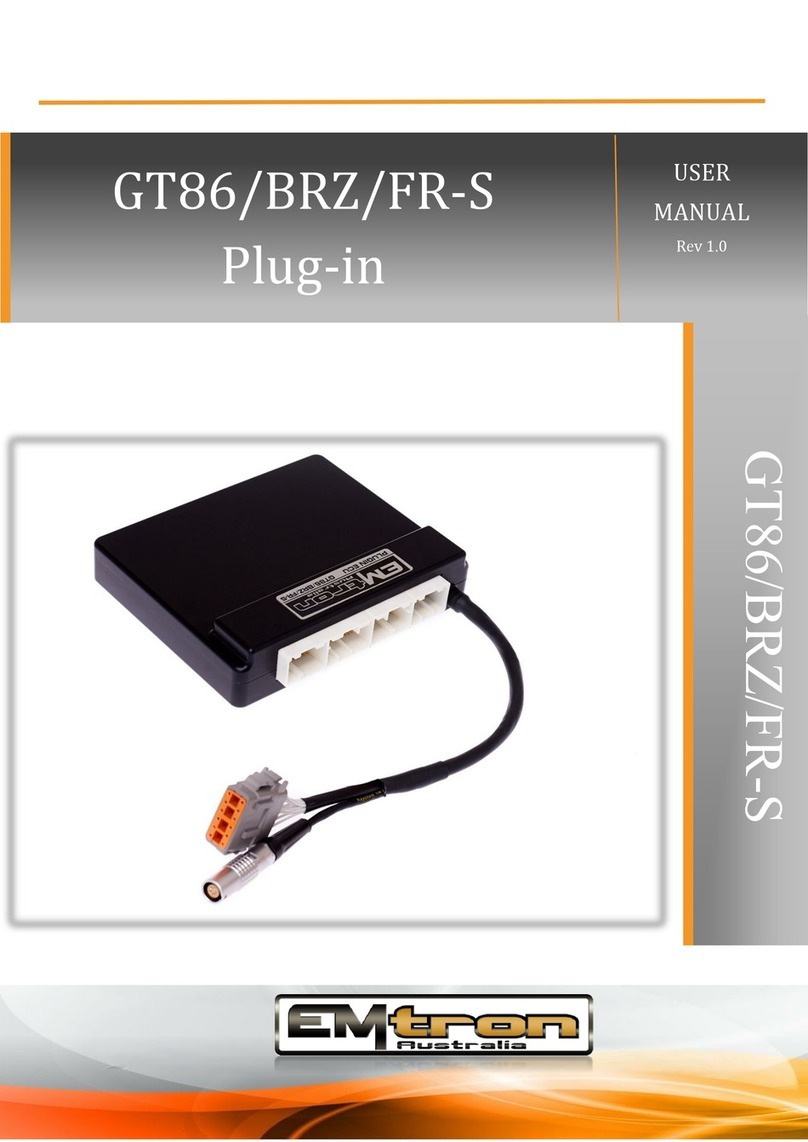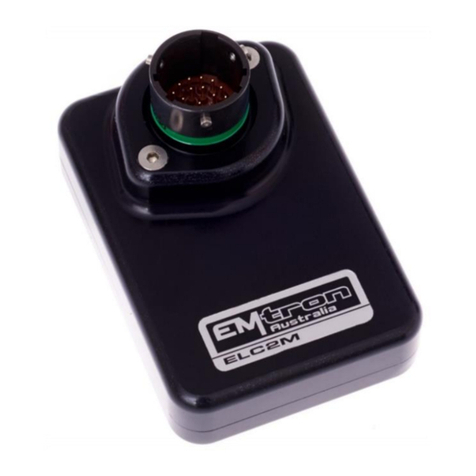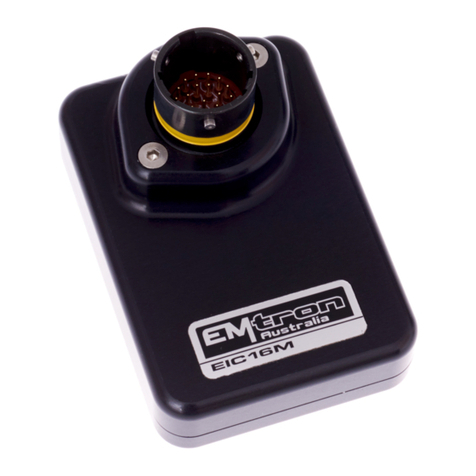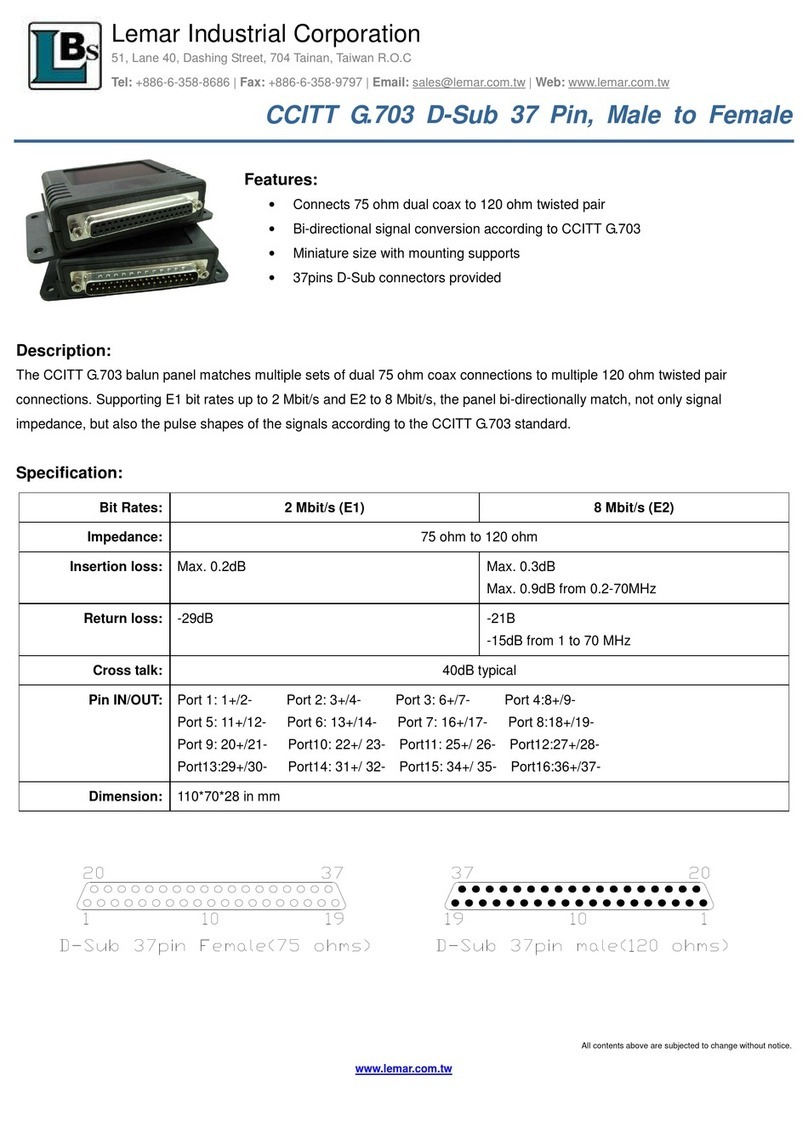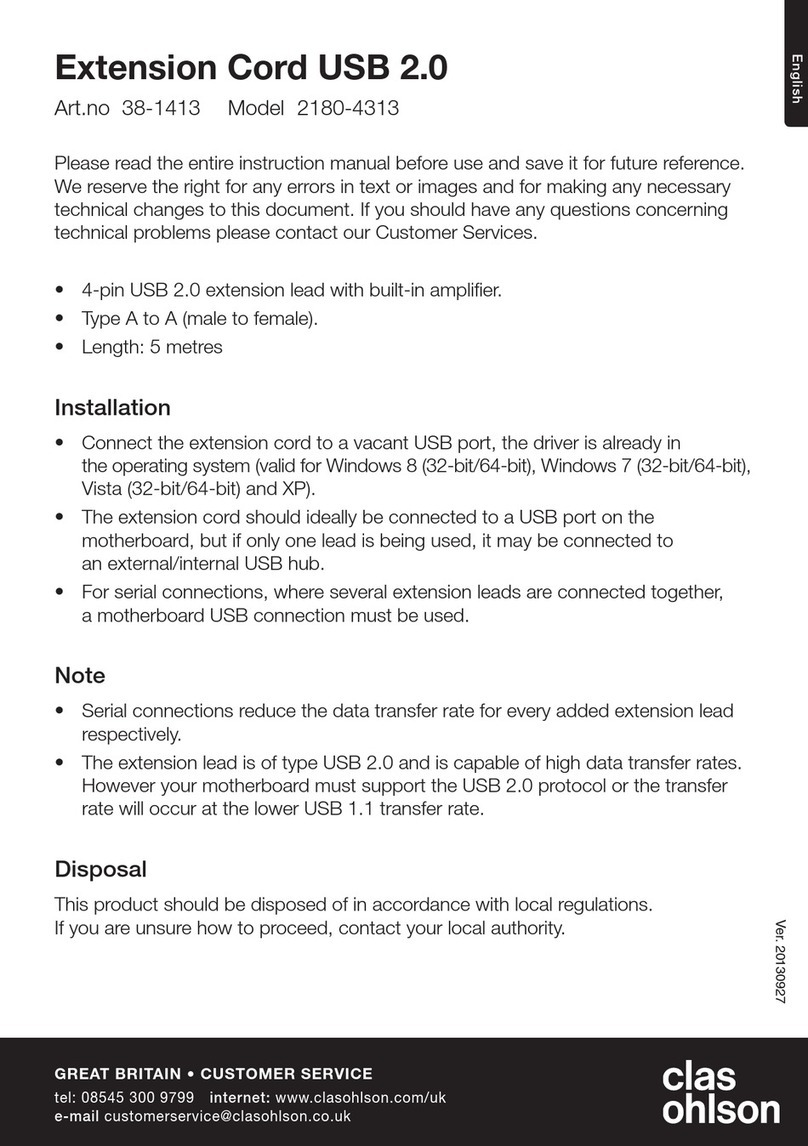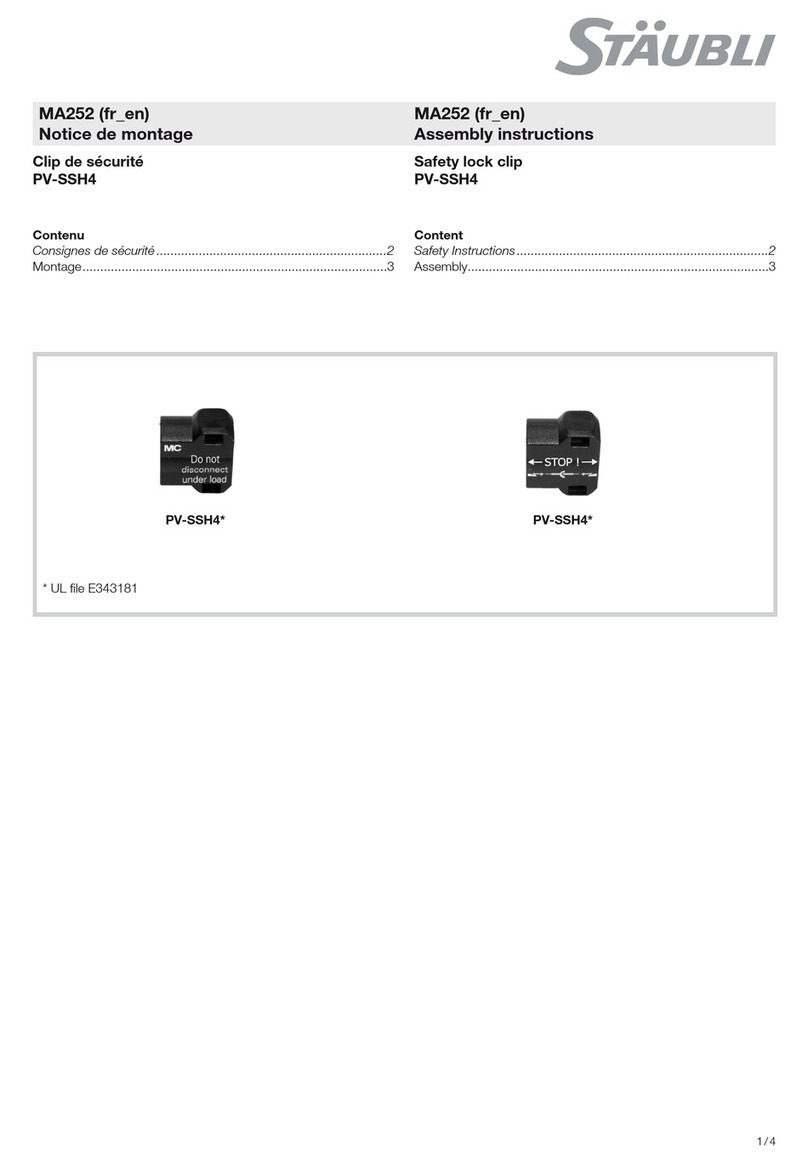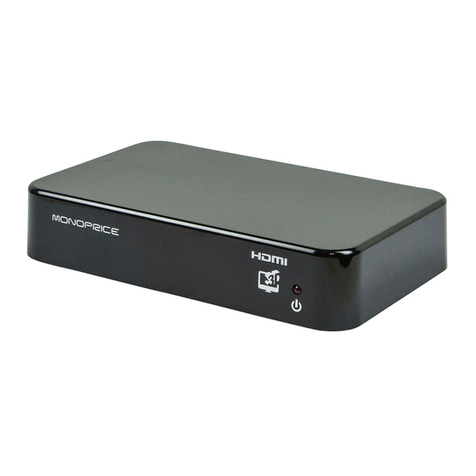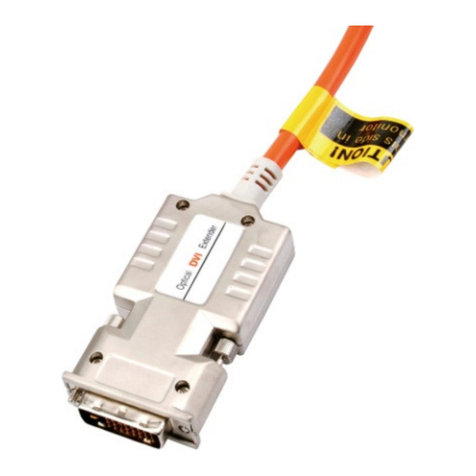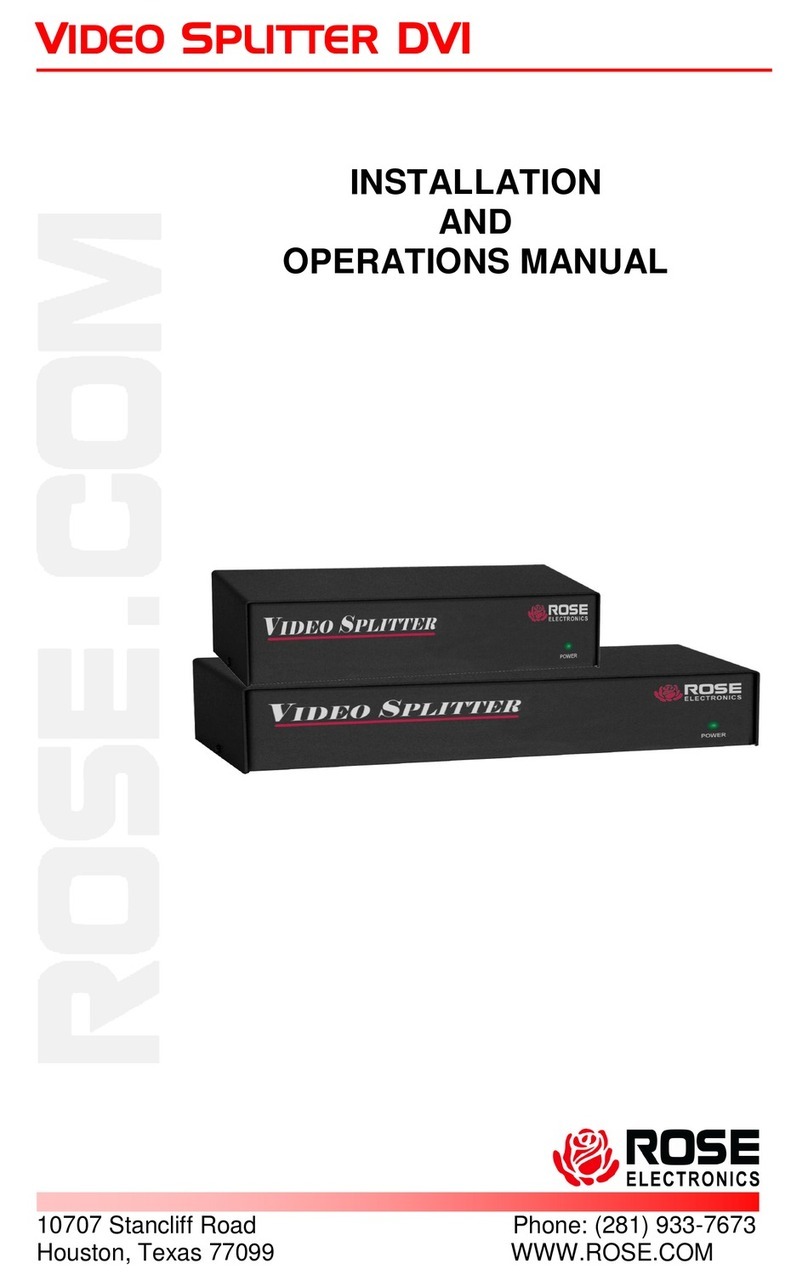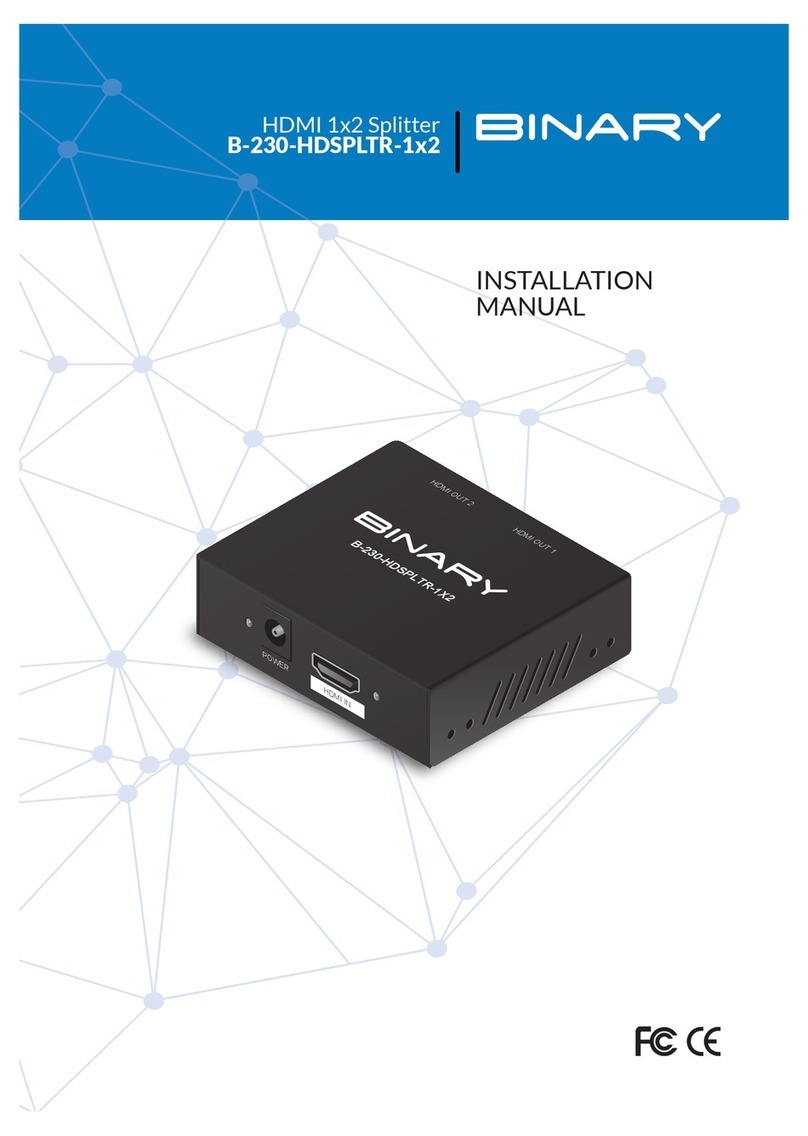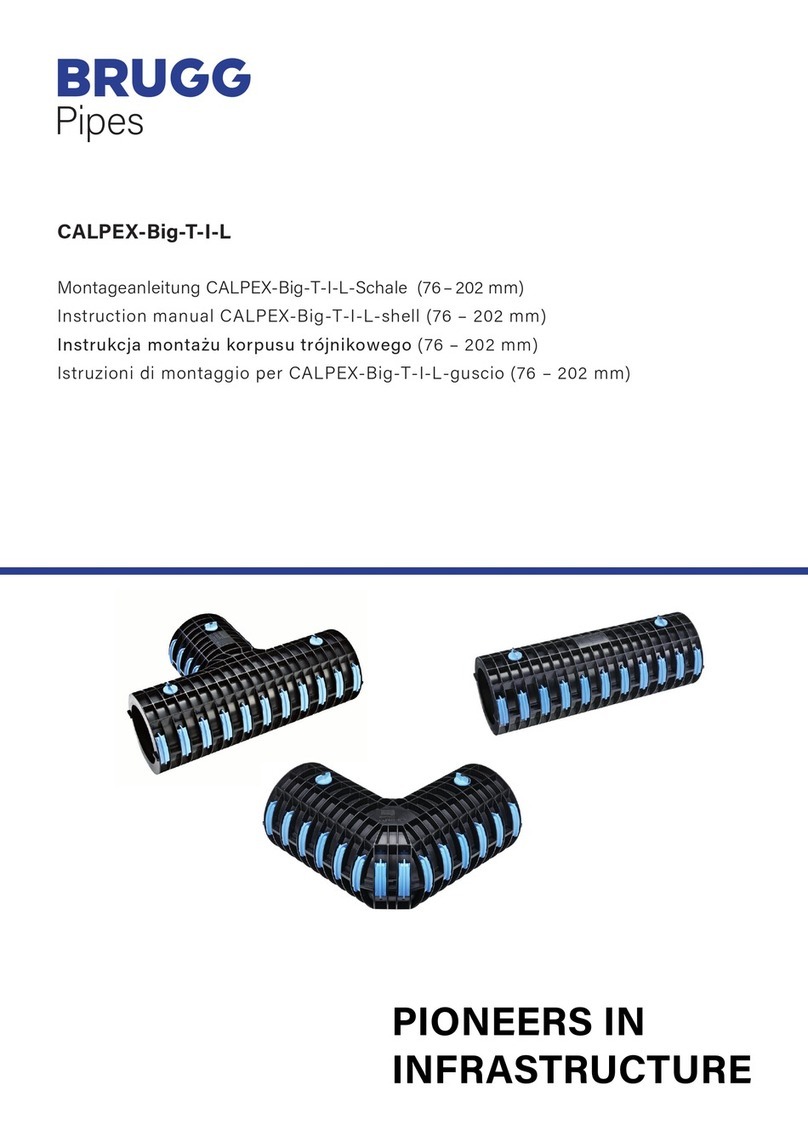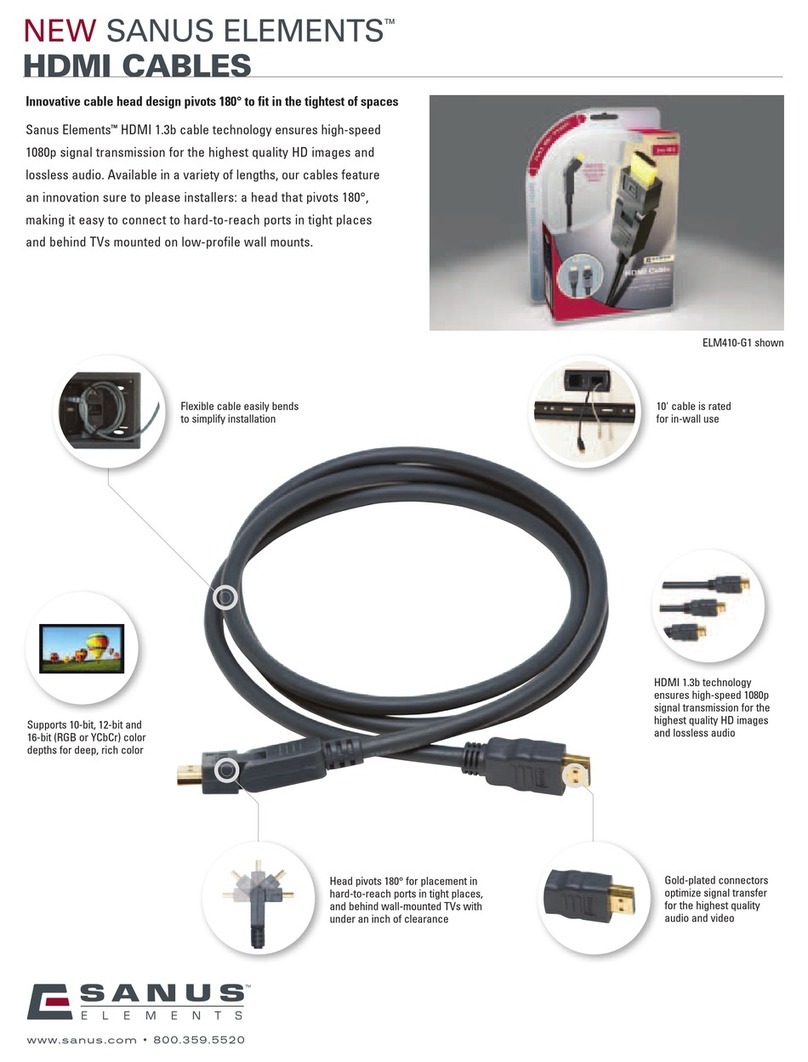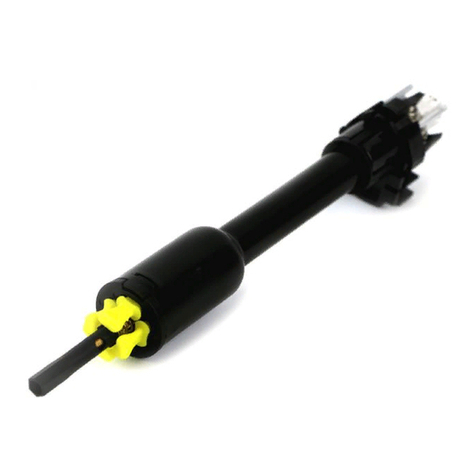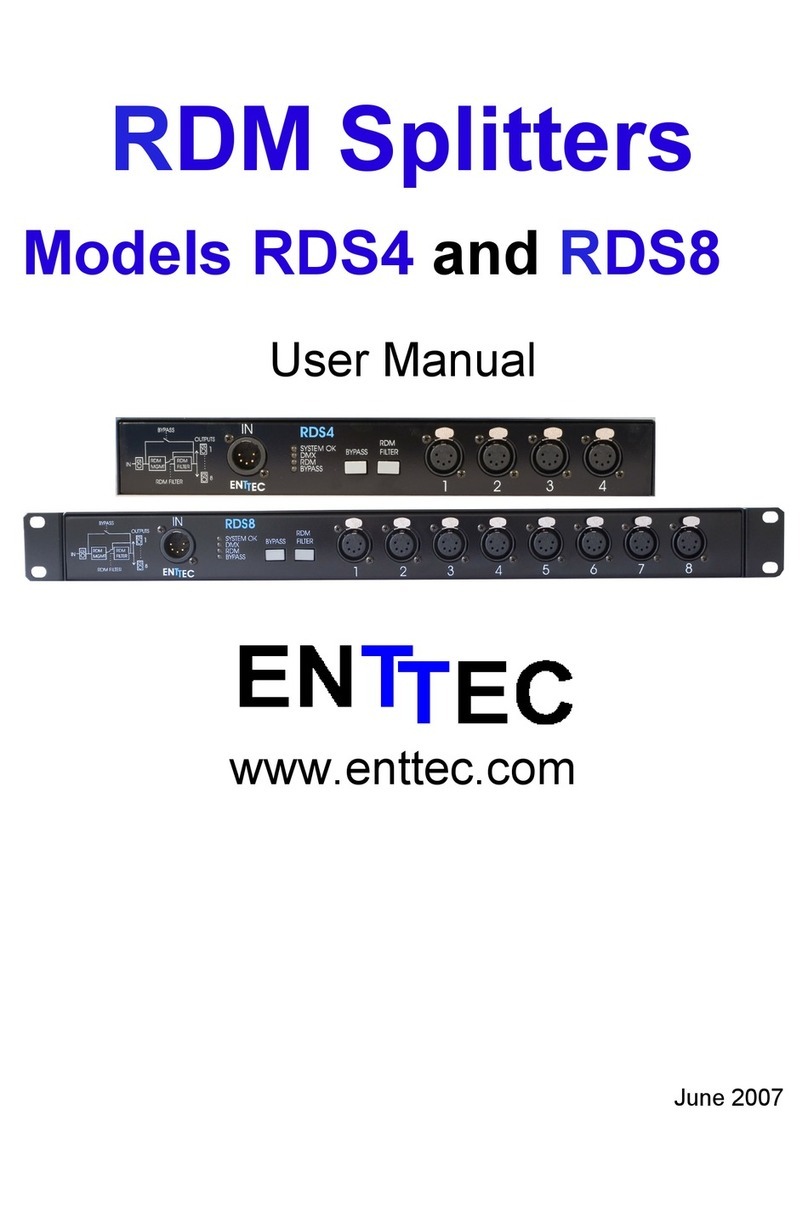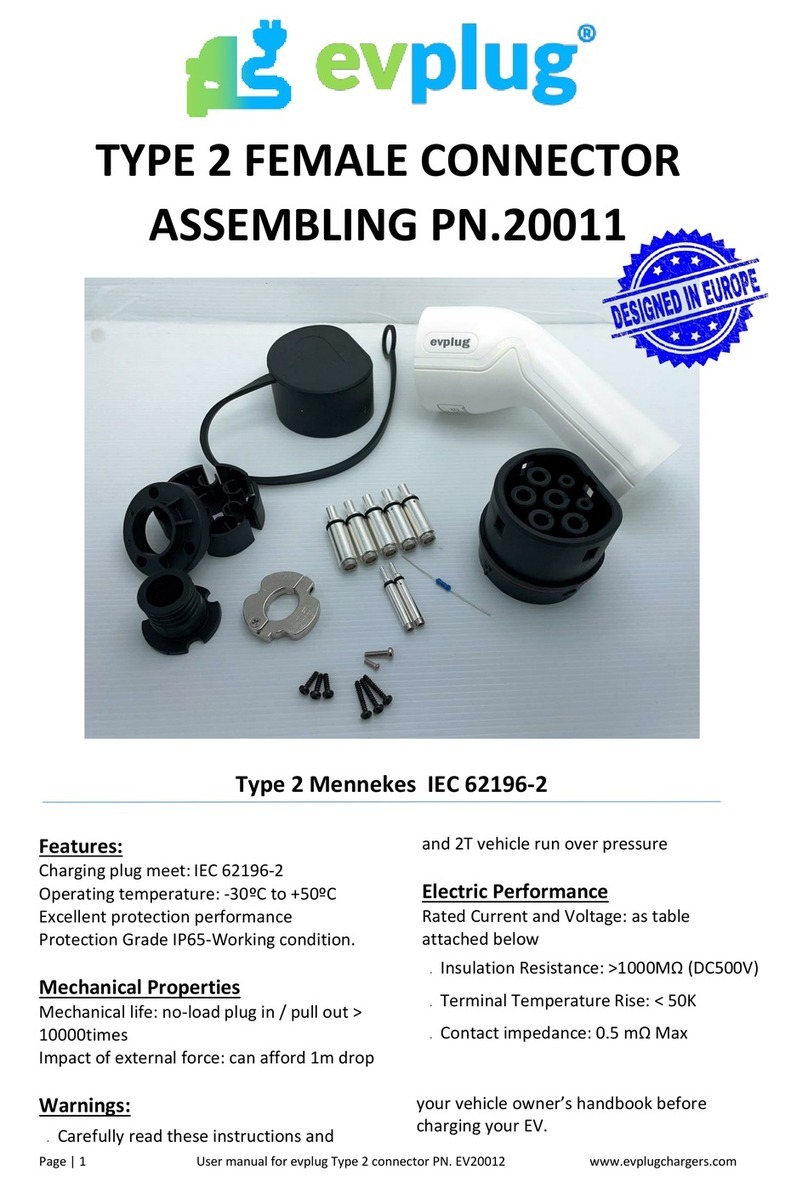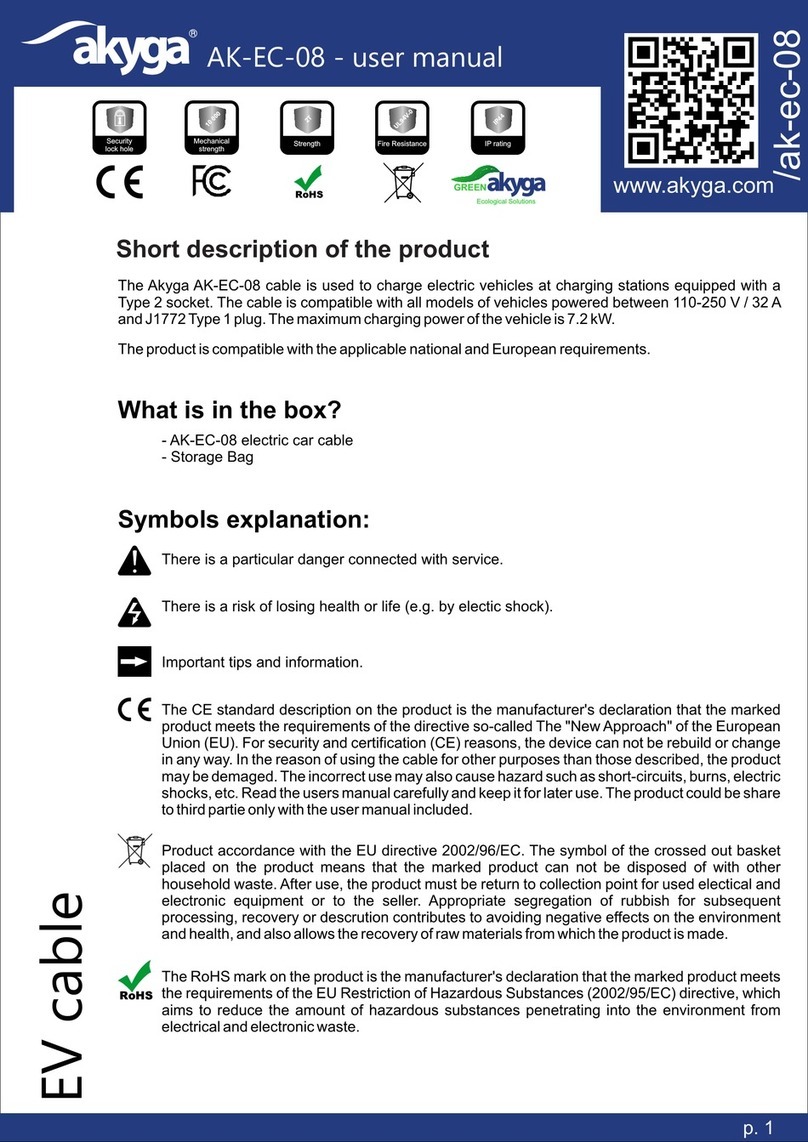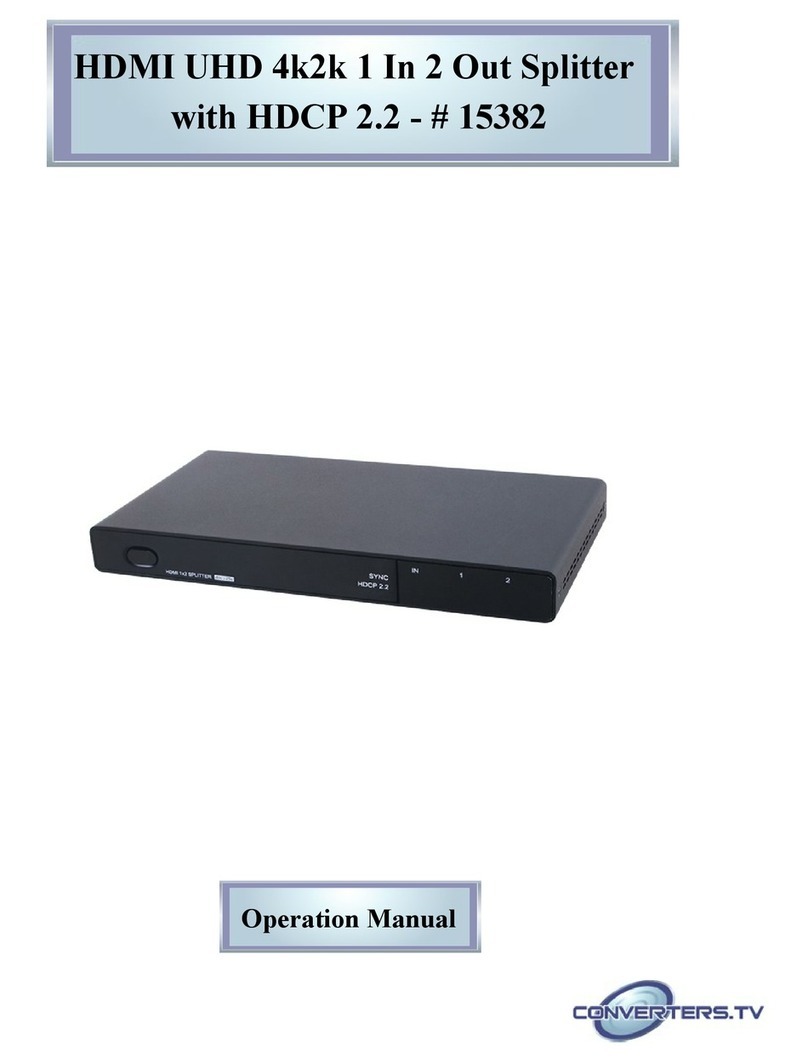Emtron KV Series User manual

Z
KV8 / KV12 / KV16 / KV16M
KV Series Hardware Manual
Rev 1.0

KV SERIES HARDWARE MANUAL
WWW.EMTRON.WORLD
© EMTRON AUSTRALIA PTY LTD JUNE 2018
1
Contents
1.0 Analog Inputs .......................................................................................................................3
1.1 Analog Input Channels 1- 16/24 ......................................................................................3
1.2 Analog Temperature Input Channels 7- 12......................................................................4
1.3 Digital Inputs 1-14 used as analog input(s)......................................................................4
1.4 Sensor 0V Reference Pin(s) ..............................................................................................5
1.5 Analog Input configuration example ...............................................................................6
2.0 Digital Inputs ........................................................................................................................7
2.1 Digital Input Channels 1- 8 –Frequency ..........................................................................7
2.11 Arming Threshold Control –Magnetic Sensors .........................................................8
2.2 Digital Input Channels 1- 14 –Switched Input.................................................................9
2.3 Digital Input Channels 1- 14 –Analog Input ..................................................................10
2.4 Digital Input configuration example ..............................................................................10
3.0 Auxiliary Outputs ...............................................................................................................11
3.1 Auxiliary Output 1-8 –Low side or High side.................................................................11
3.2 Auxiliary Output 9-12 –Half Bridge ...............................................................................12
3.3 Auxiliary Output 13-16 –Half Bridge .............................................................................12
3.4 Auxiliary Outputs –Full Bridge Configuration (DBW)....................................................13
3.5 Auxiliary Output –Flywheel diodes ...............................................................................14
3.51 VVT and Idle Solenoids –why we need flywheel diodes.........................................14
3.52 Boost Control Solenoid ............................................................................................14
3.53 Transmission Brake Solenoid ...................................................................................15
3.6 Permanently Powered Loads .........................................................................................15
3.7 Auxiliary Output configuration example........................................................................16
4.0 Injector Outputs.................................................................................................................17
4.1 Injector Control..............................................................................................................17
4.1 Peak and Hold Injector Control......................................................................................17
4.2 Saturated Injector Control .............................................................................................18
4.3 Auxiliary Load Switching on Injector Outputs................................................................18
4.4 Protection ......................................................................................................................18
5.0 Ignition Outputs .................................................................................................................19
5.1 Ignition Control ..............................................................................................................19
5.2 Auxiliary Load Switching on Ignition Outputs................................................................19

KV SERIES HARDWARE MANUAL
WWW.EMTRON.WORLD
© EMTRON AUSTRALIA PTY LTD JUNE 2018
2
5.3 Protection ......................................................................................................................20
6.0 Crank Index and Sync Sensor Inputs ..................................................................................21
7.0 Knock Control.....................................................................................................................22
8.0 Lambda Control..................................................................................................................22
9.0 Supply Voltage Inputs ........................................................................................................23
9.1 ECU Supply .....................................................................................................................23
9.2 Aux 9-12 Supply .............................................................................................................23
9.3 Aux 13-16 Supply ...........................................................................................................24
10.0 Regulated Voltage Outputs..............................................................................................24
11.0 EFI Relay Control..............................................................................................................25

KV SERIES HARDWARE MANUAL
WWW.EMTRON.WORLD
© EMTRON AUSTRALIA PTY LTD JUNE 2018
3
1.0 Analog Inputs
The KV series supports up to 24, 12-bit high resolution analog input channels.
KV ECU
Analog Inputs
KV8
16
KV12
16
KV16
16
KV16M
24
1.1 Analog Input Channels 1- 16/24
All analog input channels are sampled using high
resolution 12-bit analog to digital converters with a
0.0 - 5.000V input range. The ECU uses a high
precision internal voltage reference giving high-
performance signal conversion. Analog channels 7-12
have configurable 1k ohm pullups so temperature
sensors can be connected to these channels when
required. All analog inputs can also be used as switched inputs with arming levels
programmable from 0.0 –5.0V.
Analog Voltage Input 1 -24 Summary
▪16x/24x Analog Inputs with 6 channels available for temperature measurement with
switchable pullup resistors
▪Fully configurable including custom calibrations
▪Switchable 1k ohm pull-up resistors on ANV 7-12 making these inputs suitable for
temperature measurement. Pullup supply is to 5.0V Vref1.
▪Every input accepts a 0.0 - 5.000V analog input range. Resolution is 1.22mV using a
12-bit analog to digital converter.
▪Input Impedance 100k Ohms to ground
▪1st order 160Hz Low pass filter
▪All inputs support ratiometric and absolute 3-wire based sensors such as MAP,
Throttle position(s) and pressures etc
▪AN7-12. Support thermistor 2-wire sensors such as engine temperature, inlet air
temperature with the pullup resistor switched ON when required.

KV SERIES HARDWARE MANUAL
WWW.EMTRON.WORLD
© EMTRON AUSTRALIA PTY LTD JUNE 2018
4
1.2 Analog Temperature Input Channels 7- 12
As mentioned on 1.1 these channels have switchable 1k
pullup resistors. This allows these channels to support
ratiometric and absolute sensors (Pullup switch OFF) or
thermistors 2-wire sensors with the pullup(s) switched ON.
When the pullup is enabled the ECU applies a ratiometric
correction which maintains a very stable output independent
of pullup supply variations.
Analog Voltage Input 7 -12 Summary
▪Switchable 1k ohm pull-up resistors, pullup supply to 5.0V Vref1.
▪Every input accepts a 0.0 - 5.000V analog input range. Resolution is 1.22mV using a
12-bit analog to digital converter.
▪Input Impedance 100k Ohms to ground
▪1st order 160Hz Low pass filter
▪Supports either ratiometric and absolute 3-wire based sensors (pullup Off) or
thermistor 2-wire sensors with pullup ON when required.
1.3 Digital Inputs 1-14 used as analog input(s)
Digital Input channels 1- 14 are primarily used to measure frequency based signal and as
switched inputs. However, the analog voltage on each digital input is also measured so all
digital inputs can support ratiometric and absolute 3-wire based sensors. The input range is
extended to 0 -20V, which means the effective resolution is 4 times less than Analog Inputs
1- 16. For this reason, don’t connect engine critical sensors to these channels e.g. Manifold
Pressure, Throttle Position, Pedal Position etc. Digital Input channels 1-14 should be used to
measure an analog signal once all the dedicated Analog Inputs 1-16/24 have been allocated.
Digital Analog Inputs 1 -8 Summary
▪Accepts a 0.0 - 20.0V analog input. Resolution is 4.88mV (10-Bit)
▪Switchable 4k7 pull-up resistor to 8.8V on all 8 channels
▪Input Impedance 39k Ohms to ground
▪Over and under voltage protection
Digital Analog Inputs 9 -14 Summary
▪Accepts a 0.0 -20.0 V analog input. Resolution is 19.61mV (8-Bit)
▪Switchable 4k7 pull-up resistor to 9.4V on all 6 channels
▪Input Impedance 70k Ohms to ground

KV SERIES HARDWARE MANUAL
WWW.EMTRON.WORLD
© EMTRON AUSTRALIA PTY LTD JUNE 2018
5
1.4 Sensor 0V Reference Pin(s)
These pins are NOT ECU grounds. Although a multi-meter test will show continuity to the
ECU ground, these pins are designed as a low current 0V reference for pressure, position
and temperature sensors. The following rules MUST always be observed:
▪DO NOT connect these pins to the ECU main ground location(s). This is a specialised
ground reference for all analog sensors and should be connected directly to the sensor
0V(ground) pin.
▪DO NOT connect frequency-based sensor grounds to the 0V Reference pin; for example,
an Ethanol content sensor. Use the main ECU ground.

KV SERIES HARDWARE MANUAL
WWW.EMTRON.WORLD
© EMTRON AUSTRALIA PTY LTD JUNE 2018
6
1.5 Analog Input configuration example
Table 1.0 shows a typical analog input assignment on a Drive by Wire (DBW) application.
Channel
Input Pin
Manifold Pressure
Analog Voltage 1
Boost Pressure
Analog Voltage 2
DBW1 Servo Position Main
Analog Voltage 3
DBW1 Servo Position Sub
Analog Voltage 4
Mass Air Flow Meter 1
Analog Voltage 5
Engine Temperature
Analog Voltage 7 (Pull-up Channel)
Inlet Temperature
Analog Voltage 8 (Pull-up Channel)
Engine Oil Temperature
Analog Voltage 9 (Pull-up Channel)
Gearbox Oil Temperature
Analog Voltage 10 (Pull-up Channel)
Fuel Temperature
Analog Voltage 11 (Pull-up Channel)
Engine Oil Pressure
Analog Voltage 12 (Pull-up Channel)
Fuel Pressure
Analog Voltage 13
Gear Detection Voltage
Analog Voltage 14
Pedal Position Sensor 1
Analog Voltage 15
Pedal Position Sensor 2
Analog Voltage 16
Table 1.0. Analog Channel 1-16 assignment example.

KV SERIES HARDWARE MANUAL
WWW.EMTRON.WORLD
© EMTRON AUSTRALIA PTY LTD JUNE 2018
7
2.0 Digital Inputs
Digital Inputs 1- 14 provide frequency and switched based inputs into the ECU. These inputs
have a high level of configurability allowing easy interface to all sensor types. Digital Inputs
1-8 can be used to measure frequency, while all channels can accept a switched input. The
analog voltage on all 14 channels is measured and can be used for diagnostics or ratiometric
sensor interface.
2.1 Digital Input Channels 1- 8 –Frequency
▪Frequency range from 0.0Hz up the 30.0kHz on all 8
channels
▪Magnetic and hall/optical effect sensor compatible with
programable trigger edge(s); rising, falling and both.
▪Independent programable frequency-based arming
threshold control, range 0.0 - 12.0V
▪Wheel speed, output shaft speed, turbo speed and other
frequency-based signals
▪VVT position(s) up to 4 channels available on DI 1- 4.
▪Switchable 4k7 ohm pull-up resistors on all 8 channels to
8.8V
▪Filter time constant = 20us
▪Maximum/Minimum input signal amplitude +/- 80V
▪Input Impedance 39k Ohms to ground.
▪Switch Input: Switch to 0V, Switch to VBatt, logic signal
NOTE
1. ONLY Digital Inputs 1-4 can be used to measure Cam Position(s) for VVT control.
2. The ECU uses “True” zero crossing detection on magnetic based signals. This gives
precise 0V crossing detection, critical on magnetic sensors used in VVT control.
3. Emtron Scope function is available on Digital Inputs 1-4.

KV SERIES HARDWARE MANUAL
WWW.EMTRON.WORLD
© EMTRON AUSTRALIA PTY LTD JUNE 2018
8
2.11 Arming Threshold Control –Magnetic Sensors
Arming threshold control is primarily used in zero crossing detection of magnetic based
signals. The zero crossing circuity cannot be triggered until the input signal has crossed an
"arming" threshold on the positive-going(rising edge) portion of the waveform. Until this
happens the zero crossing circuity is OFF and all zero crossings will be ignored. Once the
input signal has exceeded the arming threshold, the zero crossing circuity is now
ready(armed) and waiting for the zero crossing.
The arming threshold values will need adjusting as the signal frequency increases. i.e. signal
amplitude is proportional to frequency until the sensor reaches saturation. For this reason,
frequency-based signal should use a 2D tables for arming threshold control.
Below is a scope trace showing a signal over one cycle, scaled at 2V/Div. A conventional
oscilloscope or the Emtron scope can be used to view a signal to best determine the correct
arming thresholds. The preferred method is to find the lowest amplitude during one cycle
(highlighted by the red circle below) and make the arming threshold 60% of that value. In
this example the lowest value is 1.9V. Taking 60% gives an arming threshold of 1.1V.
In summary when the positive-going input exceeds 1.1V, the zero crossing circuity becomes
armed and is ready to detect the zero crossing on the next falling edge.

KV SERIES HARDWARE MANUAL
WWW.EMTRON.WORLD
© EMTRON AUSTRALIA PTY LTD JUNE 2018
9
2.2 Digital Input Channels 1- 14 –Switched Input
Digital Input channels 9 -14 are for non-frequency based signal such as switched inputs,
while Digital Inputs 1-8 are available for both. The status of a switched input (On/Off) is
controlled by measuring the analog input voltage and comparing against user defined On
threshold and user defined Off threshold. A switched input can supply either a ground or
voltage into the ECU.
▪Accepts a 0.0 - 20.0V analog input.
▪Effective resolution DI 1-8 is 4.88mV (10-Bit)
▪Effective resolution DI 9-14 is 19.61mV (8-Bit)
▪Switch to 0V, Switch to VBatt, logic signal
▪On/Off switched inputs: AC request, launch enable, cruise
switch, table control switching etc with programable
switch-based arming threshold control, range 0.0 - 20.0V
▪Switchable 4k7 ohm pull-up resistors on all 14 channels.
▪Over and under voltage protection.
▪Input Impedance DI1-8, 39k ohms to ground
▪Input Impedance DI9-14, 70k ohms to ground
Switch to Ground
In the case of a switch supplying a ground, the pullup resistor needs to be turned ON. With
the switch in the OFF position, the ECU input will read the voltage supplied by the pullup
resistor. With the switch in the ON position, the pullup resistor voltage is pulled to ground
and the ECU input will read close to 0V.
NOTE: The current is limited by the 4k7
resistor so pulling the input to ground using
the switch will not damage the ECU.
The current can be worked out using Ohms
Law: V = I x R. Measure the voltage at the pin
with the switch OFF, typically around 9V.
Resistor = 4700 Ohm
Current (I) = 9V / 4700 = 1.9mA

KV SERIES HARDWARE MANUAL
WWW.EMTRON.WORLD
© EMTRON AUSTRALIA PTY LTD JUNE 2018
10
Switch to Power
In the case of a switch suppling power, the
pullup resistor needs to be turned OFF. With
the switch in the OFF position, the ECU input
will read the 0V through the internal pull-
down resistor network. With the switch in the
ON position, the switch voltage is fed into the
ECU input.
NOTE: The ECU input is protected against high
voltage up to +80V. Feeding the battery
voltage into an input will not damage the ECU
2.3 Digital Input Channels 1- 14 –Analog Input
When not used as frequency or switched inputs these channels can be used to measure analog
signals for ratiometric and absolute 3-wire based sensors. Refer back to Section 1.3.
2.4 Digital Input configuration example
Table 2.0 shows a Digital Input engine configuration example for both Non-VVT and VVT
applications.
DI Input Pin
Channel (non VVT)
Channel (VVT)
Digital Input 1
Speed Rear LH
Intake LH Cam Position
Digital Input 2
Speed Rear RH
Intake RH Cam Position
Digital Input 3
Power Steer switch
Exhaust LH Cam Position
Digital Input 4
Start Switch
Exhaust RH Cam Position
Digital Input 5
Clutch Switch
Speed Front LH
Digital Input 6
Turbo Speed
Speed Front RH
Digital Input 7
Launch Enable Switch
Speed Rear LH
Digital Input 8
Fuel Used Reset Switch
Speed Rear RH
Digital Input 9
Rotary Switch
Clutch Switch
Digital Input 10
AC switch
Start Switch
Digital Input 11
Launch Enable Switch
Digital Input 12
Fuel Used Reset Switch
Digital Input 13
AC switch
Digital Input 14
Rotary Switch
Table 2.0. Digital Input engine configuration example

KV SERIES HARDWARE MANUAL
WWW.EMTRON.WORLD
© EMTRON AUSTRALIA PTY LTD JUNE 2018
11
3.0 Auxiliary Outputs
The ECU has 16 Auxiliary Outputs with a wide variety of driver types to suit all applications.
These drives are suitable for controlling relays, resistive and inductive loads, stepper
motors, DC servo motors and electronic throttles. All outputs are short circuit and over
current protected.
3.1 Auxiliary Output 1-8 –Low side or High side
Auxiliary 1-8 drivers can be configured as Off, Low side
or High side driving. Low side refers to an open
collector output that switches to ground. A High side
driver refers to an output that switches to the ECU
Supply voltage.
▪Auxiliary 1-8 drivers can be configured for Low side
or High side driving
▪Maximum frequency 15kHz
▪Flywheel diode integrated into all outputs with
recirculation current to the ECU Supply pin D1
▪Pin voltage monitored for diagnostics
▪Over current / Short to Battery/Thermal overload protection
▪Electrostatic discharge (ESD) protection
▪Reverse battery protection
Low Side Drivers
▪Auxiliary 1-4: Low side 4A continuous, 8A limit
▪Auxiliary 5-8: Low side 2.5A continuous, 5A limit
High Side Drivers
▪Power soured from the ECU Supply pin
▪Auxiliary 1-8: High side 4A continuous, 9A limit
Suitable applications
▪High frequency solenoids used in Variable Valve Timing (VVT), Variable Valve Timing
Electric (VTiE), Idle Speed Control
▪Low frequency solenoids used in boost control, gearshift solenoids, stepper motor and
many more
▪Solenoid and relay switching used in cam switching (VTEC), runner length control and
basic fuel pump, fan and AC relay control.

KV SERIES HARDWARE MANUAL
WWW.EMTRON.WORLD
© EMTRON AUSTRALIA PTY LTD JUNE 2018
12
3.2 Auxiliary Output 9-12 –Half Bridge
Half bridge drivers supply either a ground or battery voltage i.e. there is no “off” state.
Auxiliary outputs 9-12 are medium power half bridge drivers, primarily used for DBW
control. Auxiliary 9/10 can be paired into H-bridge configuration for DBW 1 control and
Auxiliary 11/12 can be paired into H-bridge configuration for DBW 2 control.
▪Driver IC for Aux9 -12 needs power using “Aux 9-12
Supply” pin D20. In non-DBW applications the ECU
Supply power source can be used. In DBW
applications power to this pin MUST come from an
ECU controlled DBW Relay.
▪Maximum frequency 15 kHz
▪Flywheel diode integrated into all outputs with
recirculation current to the Aux 9-12 Supply pin D20
▪Over current / Short to Battery/Thermal overload
protection
▪Electrostatic discharge (ESD) protection
▪Reverse battery protection
▪Half Bridge 5A continuous and 8A limit. Can be used
as Low Side, High Side or paired with another channel for DC motor control (DBW)
3.3 Auxiliary Output 13-16 –Half Bridge
Half bridge drivers supply either a ground or battery voltage i.e. there is no “off” state.
These are high power half bridge drivers used to switch high current inductive loads. In a
KV12 and KV16 they can also be paired for DBW control giving a total of 4 DBW channels.
▪Driver ICs for Aux13 -16 needs power using “Aux 13-
16 Supply” pin D2. In non-DBW applications the ECU
Supply power source can be used. In DBW
applications power to this pin MUST come from an
ECU controlled DBW Relay.
▪Maximum frequency 15 kHz
▪Flywheel diode integrated into all outputs with
recirculation current to the Aux 13-16 Supply pin D2
▪Over current / Short to Battery/Thermal overload
protection
▪Electrostatic discharge (ESD) protection
▪Reverse battery protection
▪Half Bridge 15.0A continuous (pin limited). Can be
used as Low Side, High Side or paired with another channel for DC motor control (DBW)

KV SERIES HARDWARE MANUAL
WWW.EMTRON.WORLD
© EMTRON AUSTRALIA PTY LTD JUNE 2018
13
3.4 Auxiliary Outputs –Full Bridge Configuration (DBW)
By connecting 2x half bridge outputs together a full bridge can be configured. This is used
for DC motor direction and braking control required for applications like DBW control. The
below schematic shows Aux 9 and 10 paired to form a full bridge configuration for DBW
control.
The following table 3.0 explains the operation for the full bridge.
Transistor
Q1 State
Transistor
Q2 State
Transistor
Q3 State
Transistor
Q4 State
DBW/Motor
Direction
Aux 9
Output
Aux 10
Output
ON
OFF
OFF
ON
Forward
H
L
OFF
ON
ON
OFF
Reverse
L
H
ON
OFF
ON
OFF
High side
Freewheeling
H
H
OFF
ON
ON
OFF
Low Side
Freewheeling
L
L
Table 3.0. Full Bridge operation
For 1 or 2 channels DBW applications the following output pairing is required:
▪DBW1, it is recommended to pair Auxiliary 9 and Auxiliary 10 outputs.
▪DBW2, it is recommended to pair Auxiliary 11 and Auxiliary 12 outputs.
For KV12 and KV16, 4 channel DBW applications the following output pairing is required:
▪DBW3, it is recommended to pair Auxiliary 13 and Auxiliary 14 outputs.
▪DBW4, it is recommended to pair Auxiliary 15 and Auxiliary 16 outputs.

KV SERIES HARDWARE MANUAL
WWW.EMTRON.WORLD
© EMTRON AUSTRALIA PTY LTD JUNE 2018
14
3.5 Auxiliary Output –Flywheel diodes
Flywheel diodes are used to eliminate the
voltage spike or flyback voltage when an
inductive load is switched off. The diode
recirculates the inductive energy at switch off,
so it can be dissipated by the internal
resistance of the load. This schematic on the
right shows the Low side driver switching off,
the red arrows indicate how the current
recirculates through the flywheel diode and
back through the load. The current will decay
until its insufficient to keep to load On or
solenoid open, at which point the load will turn Off.
Note: The ECU and load share the same power supply allowing the flywheeling to operate.
Important points
▪Flywheel diodes allow inductive energy to be dissipated back into the load
▪Flywheel diodes will increase the time it takes for the load to switch off
▪Flywheel diodes minimize EMI by removing the inductive voltage spike and forcing
the current to recirculate. The higher the frequency to more important this is.
3.51 VVT and Idle Solenoids –why we need flywheel diodes
When controlling VVT solenoids flywheel diodes are required for the solenoid to operate
correctly. At frequencies between 200Hz - 300Hz, the flywheel diode prevents the solenoid
switching fully On or fully Off. The flywheel diode allows the current to recirculate and find
an “average” value during the switch On and switch Off times (duty cycle). Instead of the
solenoid switching fully On or fully Off we can control its position between these 2 points.
By controlling the duty cycle, the solenoid average position can be controlled.
For this reason, Auxiliary channel 1-16 are recommended for VVT/Idle solenoid control. If
however a Fuel or Ignition channel is used an external flywheel MUST be fitted.
3.52 Boost Control Solenoid
These solenoids require a fast reduction in current when switched off. As all Auxiliary
channels have integrated flywheel diodes this recirculation circuity slows the switch off time
at higher frequencies and will cause solenoid control issues. For this reason, the boost
control modulation frequency should be kept below 30Hz. Typical values are 15 –20Hz.

KV SERIES HARDWARE MANUAL
WWW.EMTRON.WORLD
© EMTRON AUSTRALIA PTY LTD JUNE 2018
15
3.53 Transmission Brake Solenoid
Some Transmission Brake solenoids produce a large amount of energy when released.
Auxiliary channels 13-16 are the only outputs with enough current to power such solenoids.
It is strongly recommended to run an external flywheel diode to prevent long term ECU
damage. If the output is modulated a flywheel diode MUST be installed (See Emtron www
for details).
NOTE: Maximum Trans-brake frequency is 100Hz
3.6 Permanently Powered Loads
Auxiliary outputs 1-8 are not suitable for
permanently powered loads. The integrated
flywheel diode will cause back-feeding onto
the flywheel recirculation pin (ECU Power pin)
and keep the ECU powered up. This can be
viewed using the schematic on the right. With
the Low and Hide side drivers off, current will
flow through the solenoid, through the
flywheel diode and back onto the ECU supply.
To avoid this issue, move the load to a non-
flywheel output such as an unused Fuel or
Ignition channel or re-configure the solenoid
supply feed.

KV SERIES HARDWARE MANUAL
WWW.EMTRON.WORLD
© EMTRON AUSTRALIA PTY LTD JUNE 2018
16
3.7 Auxiliary Output configuration example
Table 3.1 shows an Auxiliary output engine configuration example for both Non-VVT and
VVT applications.
Aux Output Pin
Channel (non VVT)
Channel (VVT)
Auxiliary 1
Idle Solenoid
VVT Intake LH Solenoid
Auxiliary 2
Boost Solenoid
VVT Intake RH Solenoid
Auxiliary 3
Tacho
VVT Exhaust LH Solenoid
Auxiliary 4
Fuel Pump
VVT Exhaust RH Solenoid
Auxiliary 5
Fuel Pump Speed
Cooling Fan
Auxiliary 6
AC Clutch
Boost Solenoid
Auxiliary 7
Cooling Fan
Tacho
Auxiliary 8
Cam Switch
Fuel Pump
Auxiliary 9
AC Fan
DBW 1+
Auxiliary 10
CEL
DBW 1-
Auxiliary 11
Downshift Solenoid
Auxiliary 12
Upshift Solenoid
Auxiliary 13
AC Fan
Auxiliary 14
CEL
Auxiliary 15
AC Clutch
Auxiliary 16
DBW Relay
Table 3.1. Auxiliary Output engine configuration example

KV SERIES HARDWARE MANUAL
WWW.EMTRON.WORLD
© EMTRON AUSTRALIA PTY LTD JUNE 2018
17
4.0 Injector Outputs
The KV series supports from 8 up to 16 injector outputs and will control both modes of
injection; Saturated and Peak and Hold.
KV ECU
Injector Outputs
KV8
8
KV12
12
KV16
16
KV16M
16
4.1 Injector Control
Precise and consistent control is also gained with a high 70V flyback voltage, allowing for
rapid current reduction at switch Off time.
▪Flyback Voltage Clamp 70V
▪Total current limited to 10A
▪Outputs can be used for ground switching, 6A Continuous, 10A Limit
▪All outputs are short circuit and over current protected
▪Pin voltage monitored for diagnostics
▪No Flywheel diodes (external diode(s) required for VVT and Idle Speed control)
▪Suitable to connect loads that are permanently powered
4.1 Peak and Hold Injector Control
When using low impedance injectors (< 5 Ohms) the ECU uses a switch mode current
limiting technique to minimise heat dissipation in the Injector. This gives better injector
control and helps maximize injector life by lowering its operating temperature. Switched
Flywheel circuity is used to recirculate injector current back to the ECU supply during the
“Hold”phase. This is ONLY active in Peak and Hold mode.
▪Independently configurable Peak and Hold
currents up to 16 cylinders
▪Flyback Voltage Clamp 70V
▪Max Peak current 8A
▪Max Hold current 4A
▪Total current limited to 10A
▪Flywheel recirculation current to the ECU
Supply pin D1 during “Hold” phase.

KV SERIES HARDWARE MANUAL
WWW.EMTRON.WORLD
© EMTRON AUSTRALIA PTY LTD JUNE 2018
18
4.2 Saturated Injector Control
Required when injector resistance is greater than 5 Ohms
▪Flyback Voltage Clamp 70V
▪Total current limited to 10A
4.3 Auxiliary Load Switching on Injector Outputs
When the Injector output is not configured to drive an injector, it can be used to switch or
modulate a resistive or inductive load. i.e. relay, waterspray solenoid, Boost solenoid etc.
▪Flyback Voltage Clamp 70V
▪Total current limited to 10A
▪Maximum Frequency 5kHz
▪No internal flywheel diodes. VVT and Idle solenoids require external flywheel diodes
4.4 Protection
▪Over current / Short to Battery protection
▪Electrostatic discharge (ESD) protection
▪Flyback Voltage Clamp 70V

KV SERIES HARDWARE MANUAL
WWW.EMTRON.WORLD
© EMTRON AUSTRALIA PTY LTD JUNE 2018
19
5.0 Ignition Outputs
The KV series supports from 8 up to 12 Ignition channels with logic level outputs.
KV ECU
Ignition Outputs
KV8
8
KV12
12
KV16
12
KV16M
12
5.1 Ignition Control
When configured for ignition, these outputs are logic level drivers, capable of sourcing
current in the range of 35 - 70mA. DO NOT connect directly to a coil and attempt to drive it.
An ignitor MUST be used between the ECU and coil.
▪Open collector output (low side) with active
current source control to produce a logic level
signal for Ignitor control.
▪Adjustable Ignition drive current (35mA or 70mA
global control). For example, more current is
required when 1 output is driving 2 ignitors.
5.2 Auxiliary Load Switching on Ignition Outputs
When the Ignition output is not configured to drive an ignitor, it can be used to switch or
modulate a resistive or inductive load. i.e. relay, waterspray solenoid, Boost solenoid etc.
▪Open collector outputs (low side) with current
source is OFF.
▪Flyback Voltage Clamp 40V
▪Continuous current limited to 1A
▪Total current limited to 3A
▪Maximum Frequency 5kHz
▪No internal flywheel diodes. VVT and Idle
solenoids require external flywheel diodes
This manual suits for next models
4
Table of contents
Other Emtron Cables And Connectors manuals
